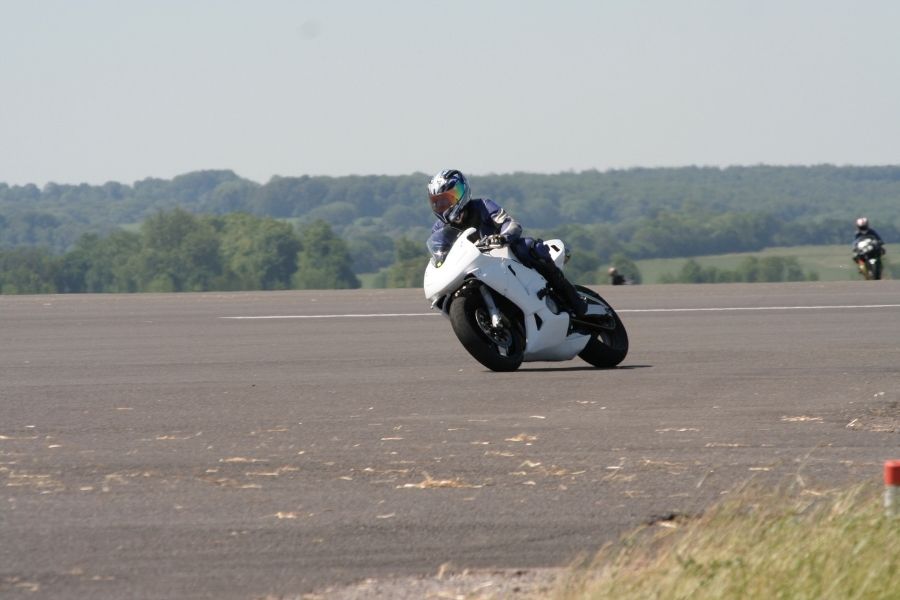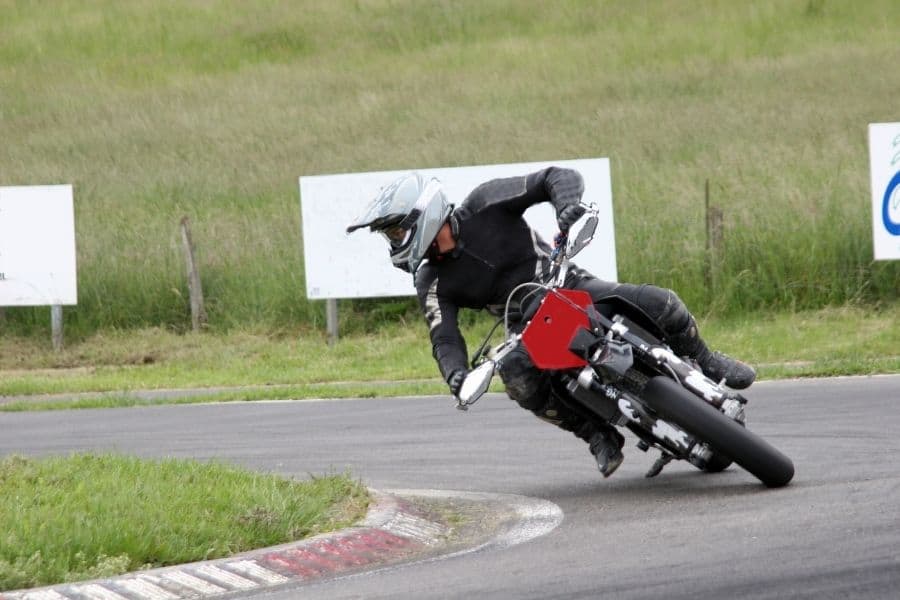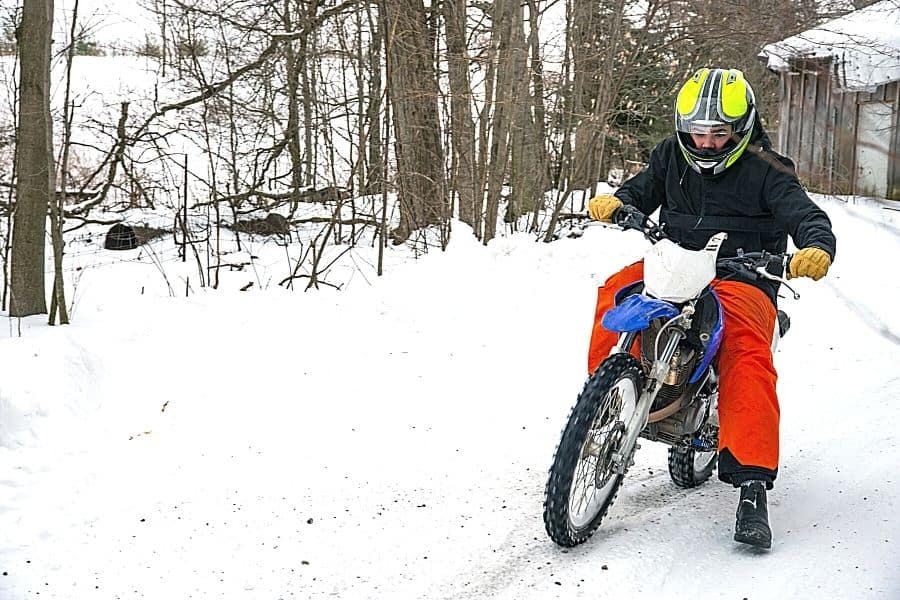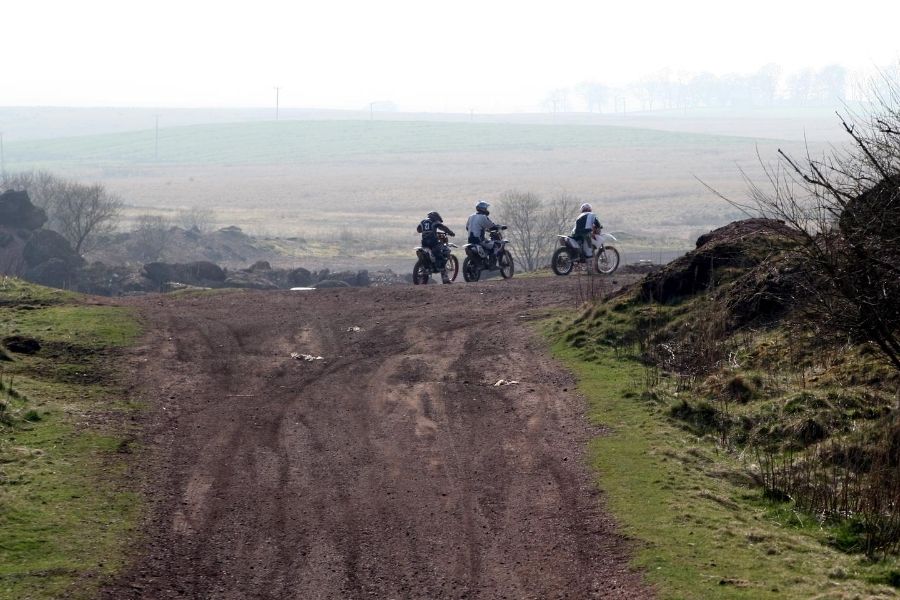Have you seen those crazy YouTube videos of dirt bikes riding on water? It seems like an urban legend but the reality might shock you.
It’s possible to ride a dirt bike on lake water at high speeds and this is called water skipping. To water skip, the rider must start and finish on flat land while travelling very fast. To successfully ride on water, dirt bike riders fit a special ‘paddle wheel’ on their dirt bikes and remain in one gear (typically 5th) while keeping their revs very high.
Through this article, we’ll share with you everything on how they make this magic trick actually happen in those cool YouTube videos.
Getting Started with Riding on Water
In order to get riding on water, it’s certainly no easy task. Any rider needs to be up to the physical abilities including years of riding on dirt bike tracks. Most riders have likely come up riding MX as kids to pull of tricks like this.
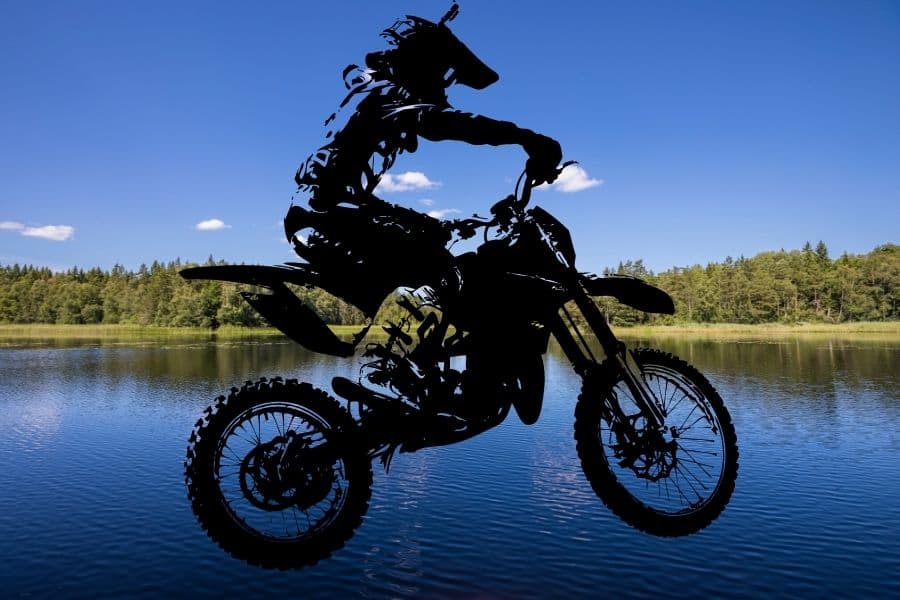
Riders cannot simply start and finish from the water. They actually need to start on land, hit the water, then move back to land. The bikes themselves can’t float by themselves and must maintain a very high degree of speed. We’re talking north of 70 miles per hour.
If they were to start in the water, they would simply sink. Instead, starting on land is necessary.
You’ll expect riders to be riding in a straight line for about 500m before reaching the water, at which point they must stay in a straight line. Dirt bike riders can’t steer when riding on the water as balance is critical.
Keeping the Momentum
Keeping the momentum up is crucial. Dirt bike riders will generally keep the same speed, the same gear and the same line from start to finish. You won’t see them playing around or trying out any other tricks, as the nature of riding a dirt bike on the water is a hard enough trick already.
Easily the most important factor is the transition between water and land on both sides. The transition should be almost flat. Thus, the motorcycle shouldn’t simply drop into the water too sharply otherwise the show will be over pretty quickly.
Not only is the entrance and departure important, but so is the water itself. There can’t be any wind which could cause a chance to the rider’s direction. Nor can there be any waves which could reduce momentum. It has to be glassy out there.
A genuine pro-tip is to keep the throttle very stable. There can’t be variances between RPM as this creates a risk of the front end dipping down.
Equipment Needed
You certainly can’t just take your ordinary dirt bike and ride it across the water. In addition to the experience you’ll already need, there is some equipment you’ll need to fit.
We recommend the following to ride your dirt bike across the water:
- A 2-stroke engine. It’s much easier to ride a 2-stroke across the water then 4-strokes.
- A rear paddle tyre. This will propel you faster across the water much like a paddle steamer boat.
- Front water skis. The front tyre will need to stay floated despite having most the weight in the rear.
You won’t really find this gear in your typical dealership and will need to order it online. That said – most of these professional riders going across lakes are having their modifications custom-made.
Genuine Dangers
While it looks good on YouTube, it’s much harder to do in the real world. Many of these stunt riders who have ridden their dirt bikes across water actually had significant modifications to make it all happen, as well as crafty and professional video shots at the right angle to make it all real. Essentially, their bikes were made for the task.
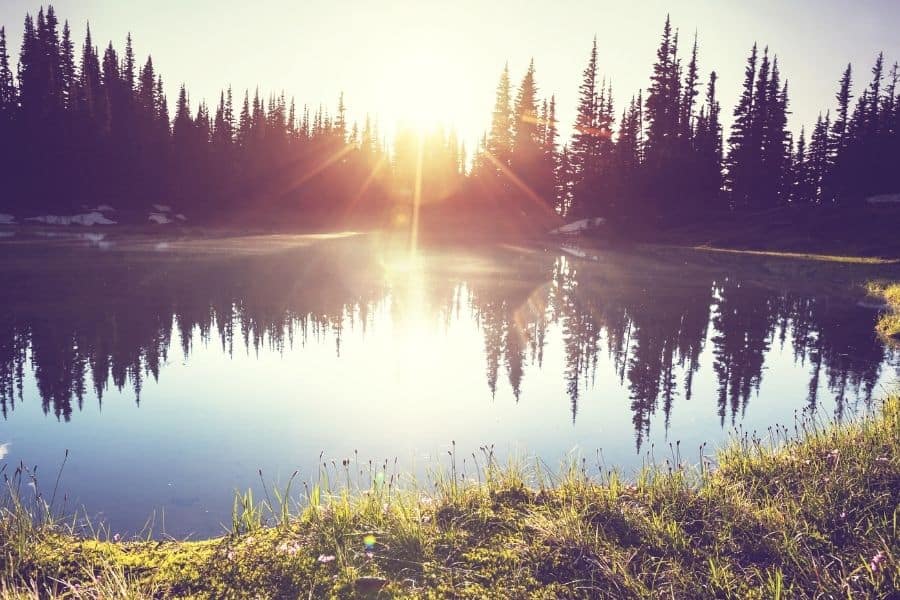
For the everyday rider, there are real dangers that you need to be aware of:
- You could very well lose your dirt bike in the water and it sinks right away. That’s the obvious risk, but there’s more.
- The riskiest part is the transition between land and water. This change in physics is where most riders mess up.
- You’ll need to wear a life jacket as you essentially are turning your dirt bike into a jetski. This will also provide some impact protection if you suddenly get a slow-down on the water.
- Any mechanical issues will have an immediate impact on performance and could lead to you crashing. This is why you’ll need skis and the rear tyre professionally fitted.
Not just this, but plenty of training and run-ups. If you’re not at a professional-calibre yet, then invest time into heading out and trying out on water that is only say 20cm deep. Look for salt pans though there is a risk of getting bogged.
A Real Experience
There are dozens of people who have genuinely ridden their dirt bike across the water. Some of them have even ridden in waves! Kids, definitely don’t try this at home.
Some riders have done water skipping across short sections of water while others have done entire lakes. These genuine experiences didn’t come easy but certainly yieled millions of views online.
As for getting started, start studying the videos on how they did it and what equpment they had. Then start out on small stretches of water before trying ton conquer the big stuff.


